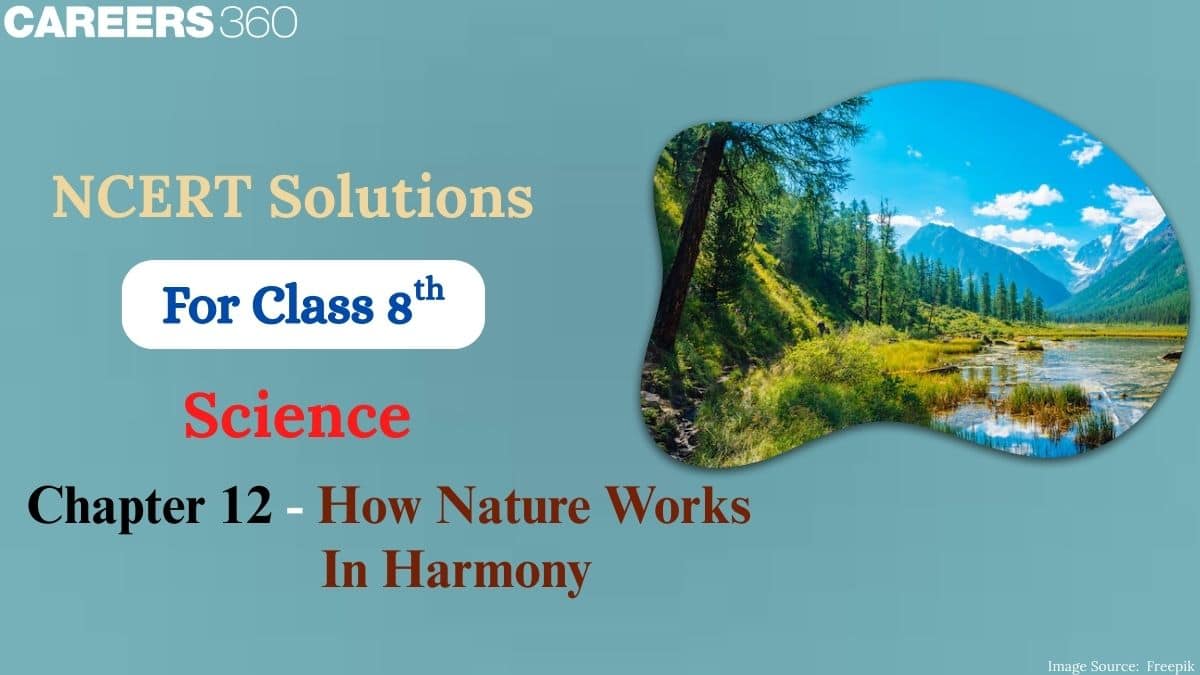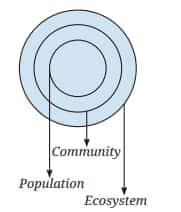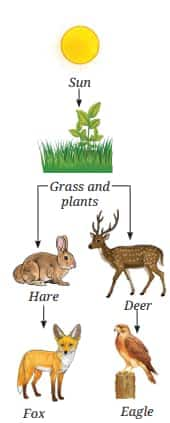NCERT Solutions for Class 8 Science Chapter 12 - How Nature Works in Harmony
The NCERT Solutions for Class 8 Science Chapter 12 - How Nature Works in Harmony, explore the living and non-living components of the ecosystem. It includes how these components interact with each other in the environment to maintain stability. Different topics, like food chains and types of interactions present in an ecosystem, are added. The NCERT Solutions provide a structured approach to understanding the topic easily without any confusion.
This Story also Contains
- Download How Nature Works in Harmony NCERT Solutions PDF
- Access to Class 8 Science Chapter 12 - How Nature Works in Harmony Solutions
- Approach to Solve How Nature Works in Harmony Class 8 Question Answer
- Important Topics of Chapter 12 NCERT Class 8 Science
- Important Question from NCERT Class 8 Science Chapter 12
- What You Will Learn from How Nature Works in Harmony NCERT Solutions
- NCERT Solutions for Class 8 Science: Chapter-wise

How Nature Works in Harmony class 8 question answer highlights how waste gets managed naturally and why every organism in the environment is important. This chapter also explains how ecosystems maintain balance through cycles like carbon and water. The solutions are prepared by the Careers360 subject experts as per the latest NCERT guidelines. Students can use these well-organised solutions to strengthen the basics and boost confidence during exams.
Download How Nature Works in Harmony NCERT Solutions PDF
Students can get the PDF for the chapter How Nature Works in Harmony from the link below. The Class 8 Science Chapter 12 - How Nature Works in Harmony question answer is a valuable study tool for the revision of important points quickly. The NCERT Solutions for Class 8 are written in easy language so that students can understand all the topics easily.
Access to Class 8 Science Chapter 12 - How Nature Works in Harmony Solutions
All the answers given below are carefully prepared by the subject experts. These solutions are best for doing homework and revision easily and quickly. By reading the Class 8 Science Chapter 12 - How Nature Works in Harmony solutions, students can understand how living and non-living things interact with each other.
Question 1: Refer to the given diagram and select the wrong statement.

(i) A community is larger than a population.
(ii) A community is smaller than an ecosystem.
(iii) An ecosystem is part of a community
Answer: The correct answer is option (iii), An ecosystem is part of a community
Explanation: According to the diagram, the population is a part of a community, and the community is a part of an ecosystem. So, the ecosystem is the largest unit, and the ecosystem is not a part of the community. Hence, option (iii) is wrong.
Question 2: A population is part of a community. If all decomposers suddenly disappeared from a forest ecosystem, what changes do you think would occur? Explain why decomposers are essential.
Answer: If all decomposers suddenly disappeared from a forest ecosystem, the following changes would occur.
-
Dead plants and animals will get collected because there will be no microorganisms to break them down.
-
Nutrients will not return to the soil, which makes the soil less fertile. Due to this, it becomes difficult to grow crops.
-
The complete ecosystem will get disturbed, and because of this, the survival of many organisms becomes difficult.
Question 3: Selvam from Cuddalore district, Tamil Nadu, shared that his village was less affected by the 2004 Tsunami compared to nearby villages due to the presence of mangrove forests. This surprised Sarita, Shabnam, and Shijo. They wondered if mangroves were protecting the village. Can you help them understand this?
Answer: Yes, mangrove forests played an important role in protecting Selvam’s village from the Cuddalore district during the 2004 tsunami. Mangroves have thick roots that slow down the strong winds and waves during storms and floods. When a tsunami happens, mangroves act as natural barriers that reduce the speed of waves, which lowers the damage.
Question 4: Look at this food chain:

If frogs disappear from this ecosystem, what will happen to the population of grasshoppers and snakes? Why?
Answer: If frogs disappear from the ecosystem shown above, then the complete food chain will be disturbed:
-
The grasshopper population will increase because no frogs are left to eat the grasshoppers.
-
Snake population will decrease because snakes depend on the frogs for food. And if no frogs are left, then no food is left for the snakes to eat.
This happens because every organism in a food chain is important and plays a major role. And if one is removed from it, it affects the complete food chain.
Question 5: In a school garden, students noticed fewer butterflies the previous season. What could be the possible reasons? What steps can students take to have more butterflies on campus?
Answer: The possible reasons for fewer butterflies in this season could be:
-
Less growth of flowering plants that provide nectar.
-
More use of chemical fertilisers can cause harm to butterflies and caterpillars.
-
Change of weather conditions and an increase in pollution can also affect the number of butterflies.
Steps which students can take to have more butterflies on campus are:
-
They can grow more flowering plants that are rich in nectar.
-
Some host plants can also be grown for caterpillars.
-
Less use of chemical fertilisers in the garden.
-
Students can try to keep the garden clean and green to attract more butterflies.
Question 6: Why is it not possible to have an ecosystem with only producers and no consumers or decomposers?
Answer: It is not possible to have an ecosystem with only producers and no consumers and decomposers because:
-
Producers like plants produce food with the help of sunlight, but they need consumers to use that energy and food. Consumers are needed for the energy transfer in the food chain.
-
Decomposers like fungi and bacteria break down the dead plants and animals. These nutrients return to the soil, which then helps the plants to grow.
Question 7: Observe two different places near your home or school (e.g., a park and a roadside). List the living and non-living components you see. How are the two ecosystems different?
Answer:
|
Place |
Park |
Roadside |
|
Component Type | ||
|
Living |
Trees, grass, flowers, butterflies, birds, squirrels, ants, insects |
Few trees, small plants, stray dogs, crows, and insects |
|
Non-living |
Soil, water, sunlight, air, rocks, and benches |
Concrete, dust, vehicles, sunlight, air, garbage |
Differences between park and roadside:
-
The park has more plants and animals in comparison to the roadside.
-
The roadside has less greenery and more pollution, whereas the park has less pollution and fresh air.
Question 8: ‘Human-made ecosystems like agricultural fields are necessary, but they must be made sustainable.’ Comment on the statement
Answer: Human-made ecosystems like agricultural fields are necessary because they provide us with food. However, nowadays, the farming methods are considered unsustainable because of the overuse of chemical fertilisers, excessive groundwater extraction, and growing only one type of crop for commercial use. To make these ecosystems sustainable, we must use some natural methods like organic farming, crop rotation, etc. This helps protect soil nutrients, water, and biodiversity for future use.
Question 9: If the Indian hare population drops because of a disease, how would it affect the number of other organisms?

Answer: If the Indian hare population drops because of a disease, it will affect the entire food chain:
-
Foxes primarily feed on Indian hares, so their population will decline if hares disappear.
-
Grass and plants will increase slightly, as hares were eating the plants.
Also, check the NCERT Books and the NCERT Syllabus here
Approach to Solve How Nature Works in Harmony Class 8 Question Answer
Students can easily answer questions from this chapter by following the steps outlined below. How Nature Works in Harmony: Questions and answers explain how all living and non-living things are connected.
-
Students must first read the chapter thoroughly to understand the components of living and non-living things.
-
Simple diagrams and flow charts can be used to learn about food chains and which animals eat what. They can refer to the Class 8 Science Chapter 12 - How Nature Works in Harmony question answer.
-
Understand the different benefits of the ecosystem by writing them down in points.
-
Try to learn how the components, such as producers, consumers, and decomposers, help in waste management. This concept is explained in Class 8 Science Chapter 12 - How Nature Works in Harmony solutions.
-
Practice MCQs, short, and long questions from the NCERT Solutions for Class 8 Science to check the knowledge.
Important Topics of Chapter 12 NCERT Class 8 Science
This chapter helps students understand all parts of nature, including plants, animals, soil, water, and air. For clear explanations, students can refer to the NCERT Solutions for Class 8 Science Chapter 12 - How Nature Works in Harmony. Given below are a few important topics covered in this chapter.
-
Living and Non-living Components in Nature
-
Importance of Every Organism in a Community
-
Types of Interactions Between Organisms and Their Environment
-
Food Chains- Who eats whom?
-
Waste Management in Nature
-
Role of Interactions in Maintaining Ecosystem Balance
Important Question from NCERT Class 8 Science Chapter 12
Solving questions like the one given below helps students understand the chapter better. To score well in exams, it’s good to solve different types of questions. For this purpose, students can depend on the NCERT Solutions for Class 8 Science Chapter 12 - How Nature Works in Harmony, which makes learning easier.
Question: Which of the following microorganisms helps in the decomposition of dead plants and animals?
Options
-
Algae
-
Fungi
-
Protozoa
-
Viruses
Answer: The correct answer is option (2), Fungi
Explanation: Fungi are known as decomposers. They secrete enzymes that break down dead organic matter, recycling nutrients back into the ecosystem.
What You Will Learn from How Nature Works in Harmony NCERT Solutions
Nature has its own balance where every living and non-living thing plays a role. This chapter helps students understand the relationships that keep the environment stable.
-
Students will know the role of food chains and food webs, which is well-explained in the How Nature Works in Harmony NCERT Solutions.
-
Examples show how plants, animals, and humans are connected, making the concept of balance simple.
-
They will understand the importance of conserving natural resources and how we can protect them.
-
How Nature Works in Harmony class 8 question answer also highlights how every organism, big or small, plays a part in maintaining ecological balance.
-
Learners will also explore how human activities affect the natural environment.
NCERT Solutions for Class 8 Science: Chapter-wise
Given below are the solution links for all chapters. Students can refer to these to perform well in the exams. These well-structured solutions are designed by experts in the subject.
Frequently Asked Questions (FAQs)
NCERT Solutions for Class 8 Science Chapter 12 are prepared by subject matter experts, and they cover all the important topics and concepts in the chapter. The solutions are written in clear and simple language, making it easy for students to understand and learn.
Chapter 12 of Class 8 Science, named “ How Nature Works in Harmony,” explains the different components of the ecosystem. It includes how plants, animals, and microorganisms are dependent on each other. Students can explore these concepts in detail by referring to the NCERT Solutions for Class 8 Science Chapter 12 How Nature Works in Harmony.
From all the chapters included in the class 8 science, the most important chapter is Chapter 4, Electricity: Magnetic and Heating Effects. It covers important topics such as electric circuits, magnetic fields, and electrical safety as well.
To score 100 marks in science class 8, students must focus on reading the NCERT thoroughly. All the questions included in the textbooks should be practiced regularly to understand the concepts and the exam pattern. Students need to do regular revision by making short notes or flash cards, which saves time during the exam.
Yes, the NCERT books for the academic year 2025-26 have been changed according to the NEP-2020. These updated books develop curiosity, creative thinking, and connect students to real-life applications more effectively.
Popular Questions
Courses After 12th
Applications for Admissions are open.
This ebook serves as a valuable study guide for NEET 2025 exam.
NEET Previous 10 Year Questions
Get nowThis e-book offers NEET PYQ and serves as an indispensable NEET study material.
JEE Main Important Physics formulas
Get nowAs per latest syllabus. Physics formulas, equations, & laws of class 11 & 12th chapters
JEE Main Important Chemistry formulas
Get nowAs per latest syllabus. Chemistry formulas, equations, & laws of class 11 & 12th chapters
JEE Main high scoring chapters and topics
Get nowAs per latest 2024 syllabus. Study 40% syllabus and score upto 100% marks in JEE
JEE Main Important Mathematics Formulas
Get nowAs per latest syllabus. Maths formulas, equations, & theorems of class 11 & 12th chapters
